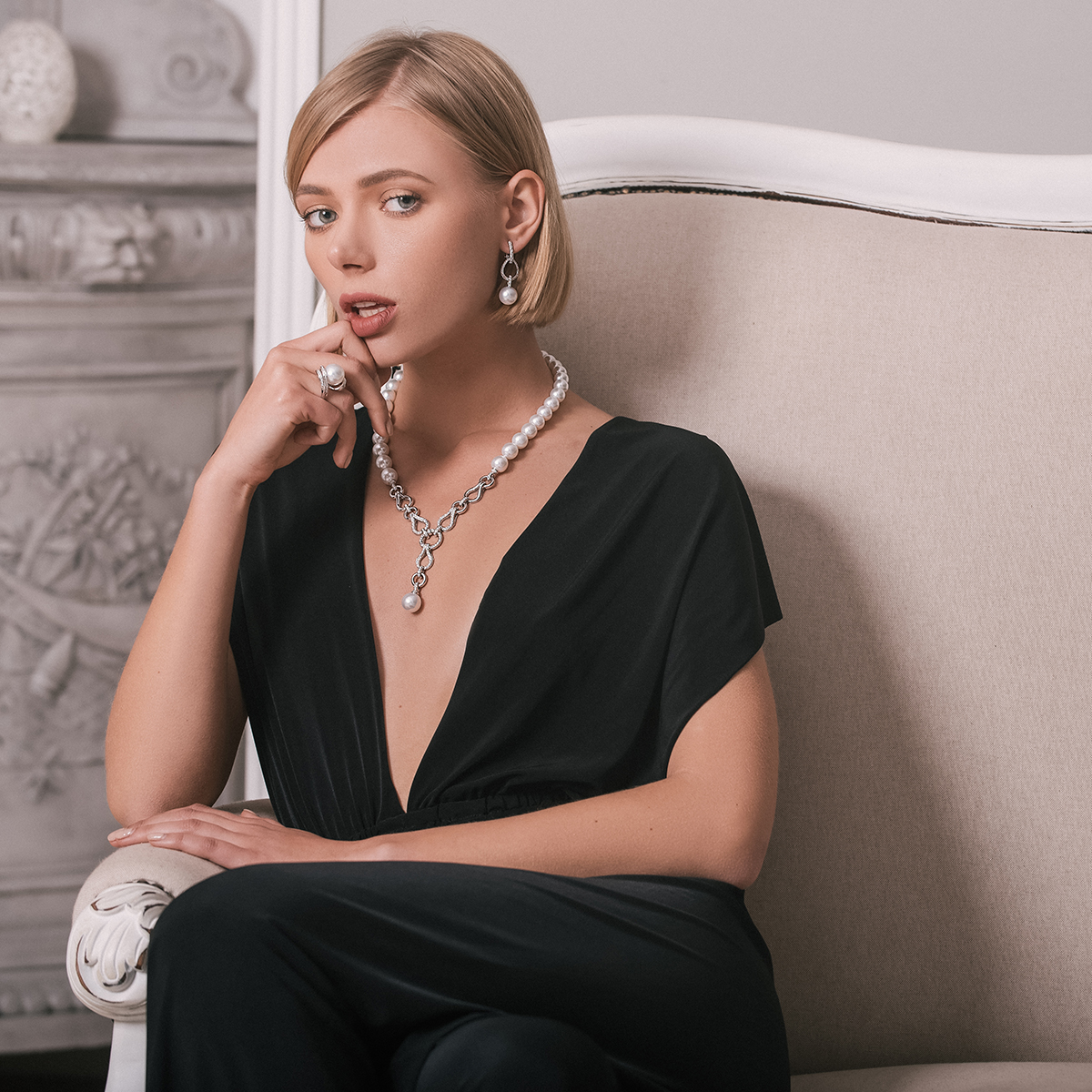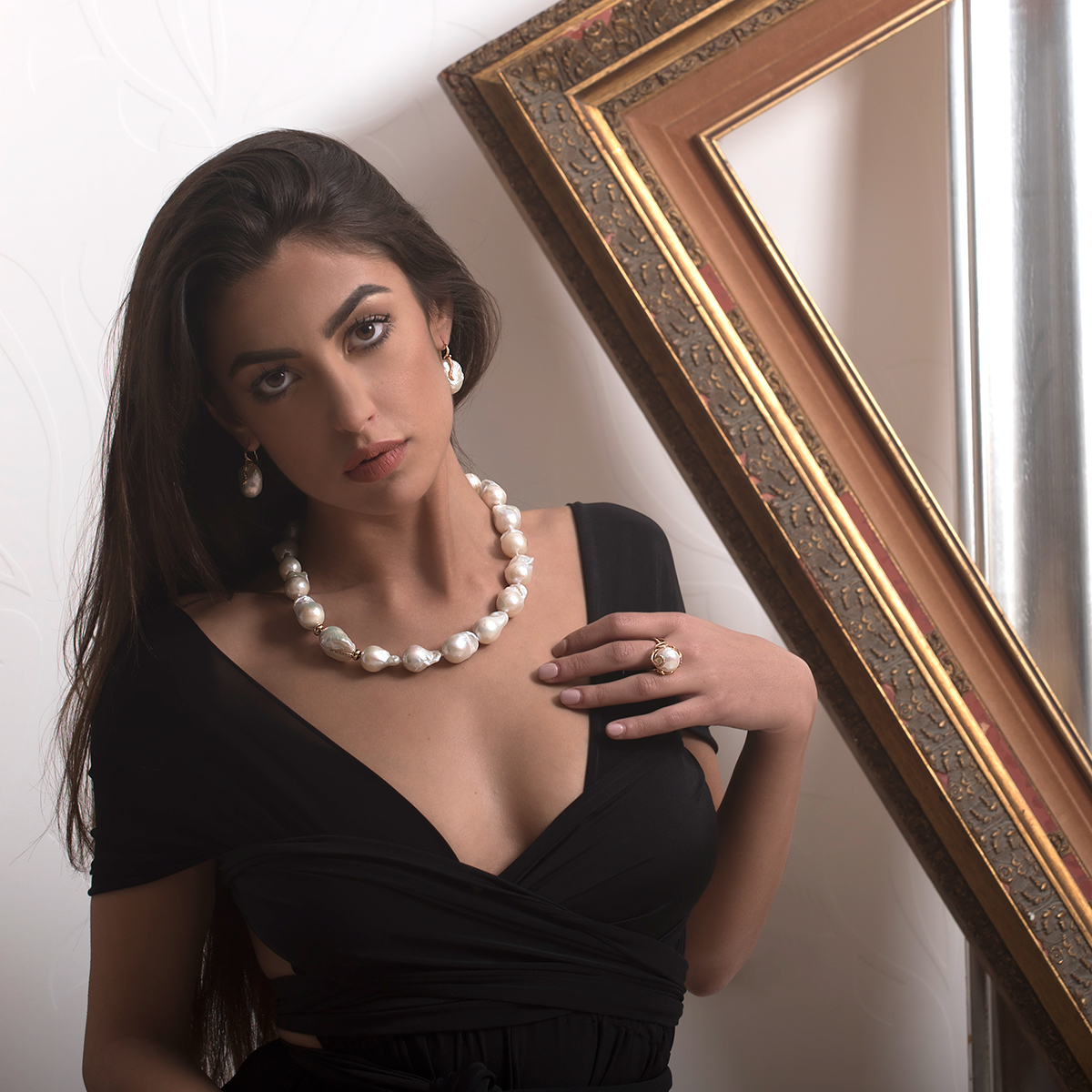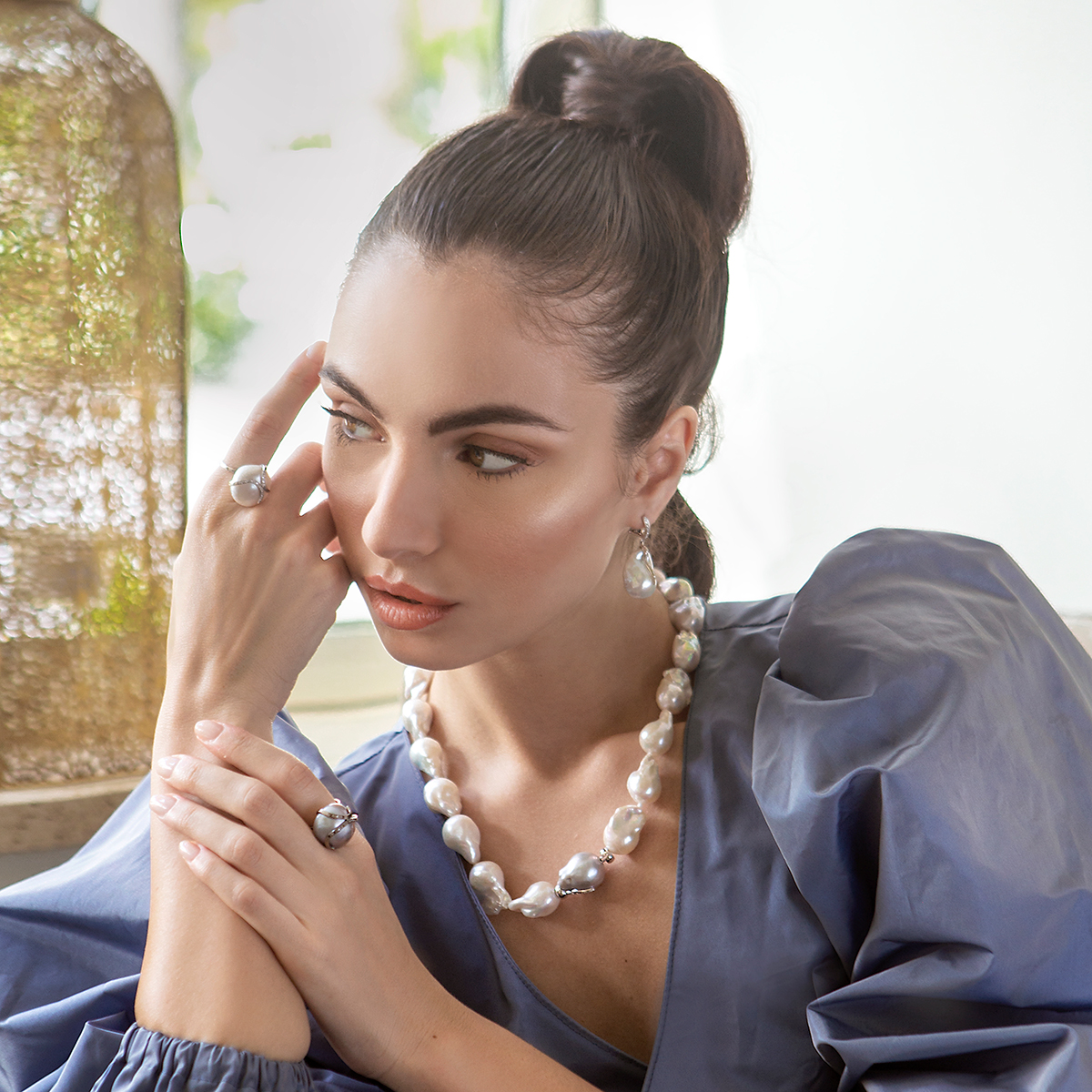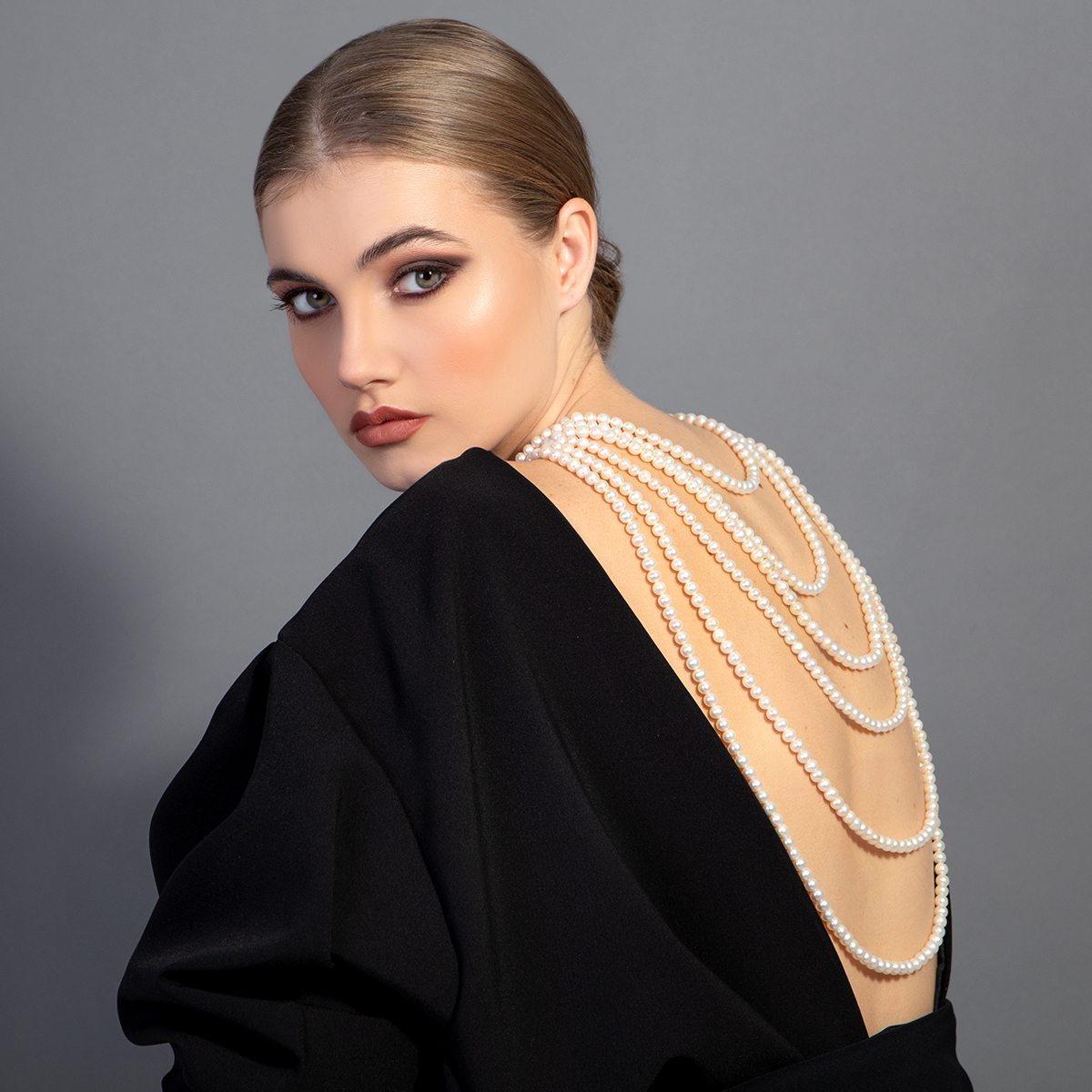Mattia Mazza Pearls
AKOYA
The pearl Akoya” is cultivated in sea water in the mollusk same name, also called “Pinctada martensiide fucata”. The Akoya pearls are the most famous among the cultured pearls and are considered to be the classic pearls to make necklaces and other jewelry made of pearls. Thanks to their forms, perfectly round, their luster, shining and bright, as well as their neutral color and sweet, the Akoya pearls are having a great success in all the jewellers in the world. Accessible and popular method patented by Kokichi Mikimoto in the beginning of the 20th century, through which you will get pearls nucleated, these now represent a point of reference for the culture pearls.
The Akoya pearls have built their reputation on quality and aesthetics. Unlike their cousins Fresh Water pearls, oysters Akoya produce rarely more than 2 beads to the collection. Oysters are nucleated with one pearl-called “pearl mother” that is introduced in the mantle of the mollusk. The use of a core has the effect of motivating the oyster wrap then mother-of-pearl this foreign object, while preserving the initial shape. These pearls are classified by categories, and their value depends on these categories.
The oyster Akoya is the smallest mollusk manufacturer of beads, and, for this reason, the pearls tend to be small. A pearl Akoya measure an average of 7 mm in diameter when a pearl of Australia medium size 13. The pearls in Akoya cultured measure between 1 mm and 10 mm, although the latter are extremely rare. The Akoya pearls are round, even if sometimes a part of the harvest involves some baroque pearl and some Keshii, or the pearl of seed, or pearls minor anucleate small. The Akoya pearls feature a bright luster, deep and very bright, which distinguishes them from other culture pearls. The Akoya pearls have neutral shades and sweet, colored ones have undergone a treatment immediately following the collection. Their natural color is white with shades of gray, or pink, or cream, or champagne, or even silver, and sometimes green. The Akoya pearls are never, of course, the black, and to achieve this purpose, are dyed using organic treatment that darkens the mother-of-pearl, which remains unaltered in time, and does not discolour.
AKOYA HANADAMA
The pearls Hanadama are selected among the finest and most beautiful Akoya pearls produced in the world today. After every collection of pearls in Japan, the beads are separated and classified according to quality, to be sold directly to the acquiring companies or auctions. All of these lots, there is always a lot that is treated with different modalities. The pearls are part of this lot are those who excel in their remarkable shine, the net area and the general quality. These pearls appointed as Hanadama, are managed and sold as a separate product. With these beads, you will receive a numbered certificate issued by the Laboratory of Science of the Pearl of Japan, which attests to the authenticity of the title Hanadama.
FRESH WATER
The Fresh Water pearls, well-known also as River Pearls are cultured pearls in freshwater in China. These beads have the advantage of being more accessible economically, while still offering a good quality of mother-of-pearl. Stand out from rivals Akoya, in addition to the price, their shape does not always round, and for the variety of colors from white to pink and lavender, and others. The oysters that produce Fresh Water pearls that are larger than the oysters Akoya, they can live 15 years of age and be nucleated multiple times. The size of the pearl of fresh water the most common varies from 2 to 5 mm, but can reach sizes of up to 14-15 mm. Assume the most diverse forms, oval, cross, stick. The cultivation of Fresh Water pearls, or pearl river , is relatively recent, their production has expanded more and more over the last few decades evolving to make of the perfectly round pearls 10-12 mm diameter, AAA quality. A non-expert to the naked eye does not reach to grasp visually the difference between these beads and the finest Akoya pearls.
SOUTH SEA
Pearls, white or golden south seas have always attracted attention. They are produced from giant clams that live on the coasts of Australia, such as oysters from the lip silver (e.g. Pinctada maxima). These pearls fascinating make the difference with all the other pearls in the world. They are valued for their large and luxurious dimension, superior to all the others, with a range from 9 mm and capable of reaching up to 22 mm for larger !
The white pearls of the South seas are known to the luster of the nacre, the satin, and their glow deep, not common in pearls, Akoya or freshwater pearls. Are the pearls are rare and highly sought after, and their value is tied directly to the quality of the surface, practically blameless as well as their luster and the amazing size, a true gift of nature! The golden pearls in Australia there is this golden color 100% natural!
These pearls are very rare, and it is not easy to find necklaces with these beads beautiful.
TAHITI
An embodiment of Charm and Elegance. The glow of natural and mystical reflections, multicoloured is the secret of their beauty. The main perlicoltori of the South seas that are located in the beautiful atolls and archipelagos of French Polynesia (the world's largest producer of black pearls of the South Seas), use an oyster to black lips: the Pinctada Margaritifera. This snail measures from 12 to 20 cm and can produce pearls from 8 up to 16-17 mm. The inner part of the valve is very dark, almost black. To get the precious pearls of this oyster, the method most current consists in collecting the oysters at the stadium still planctonico: the larvae floating freely in secure networks manifolds that are placed for this purpose. Gather with care and the most beautiful among the young oysters as soon as they reach 2 cm and then breed them to adulthood in the crops. The larger beads, and the darker shades of this variety to belong to the subspecies Cumingi, which is located in the surroundings of Tahiti.




